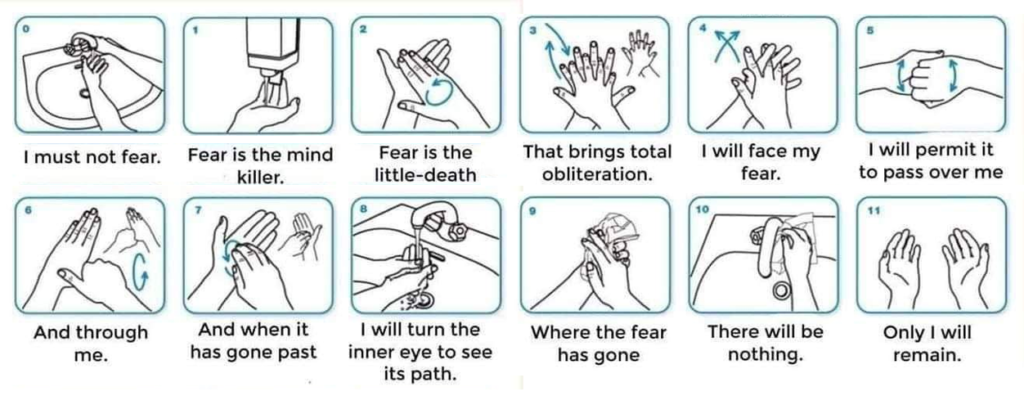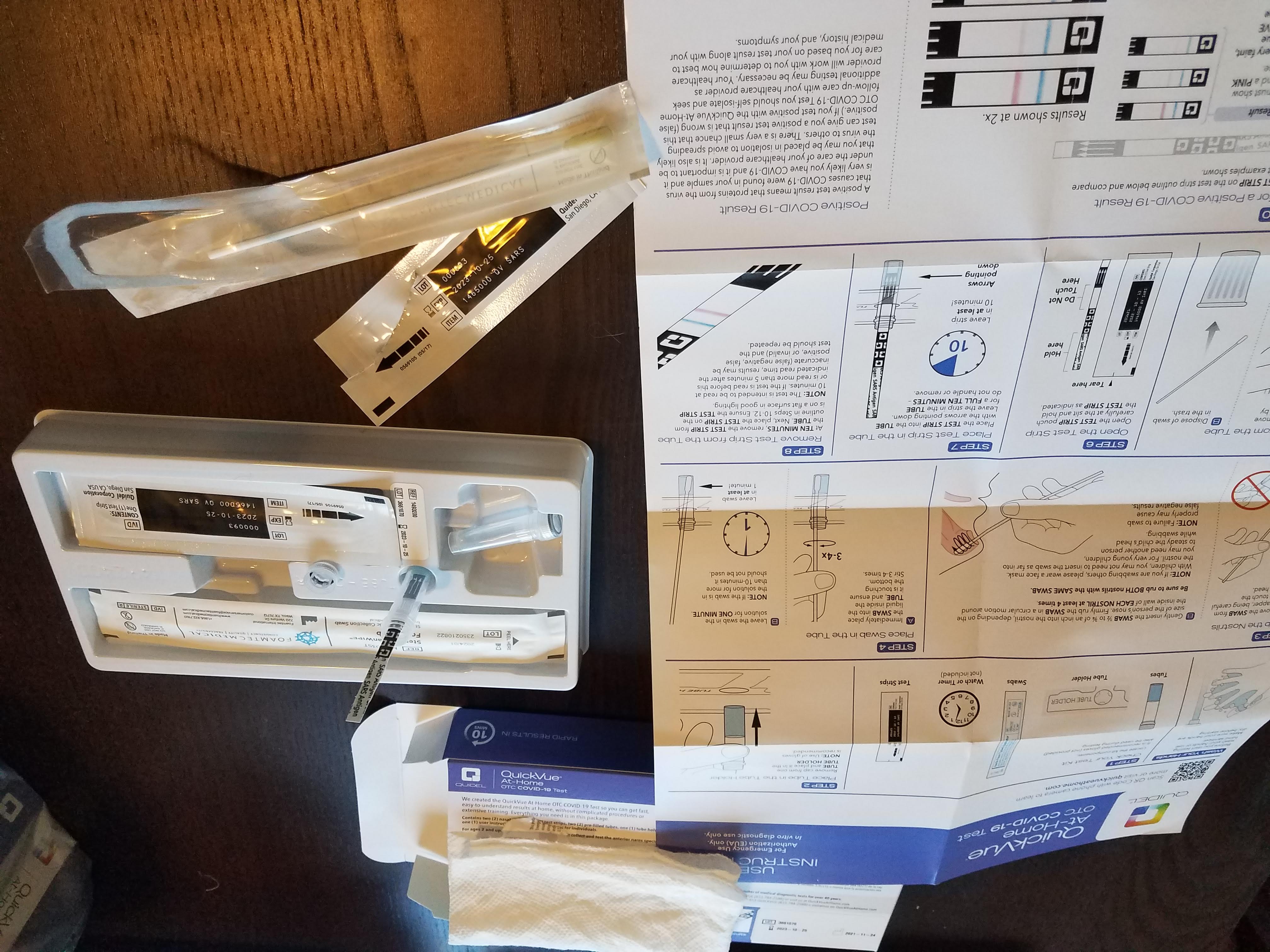The holidays have been particularly difficult for me this year because for the second year in a row (and for only the third year of my life), I was not going to be at my parents’ house at Christmas. Christmas 2020 was difficult, but COVID was new, and we were all learning to adapt together. We also had the hope of vaccines just around the corner and the sense that if we could just stick it out until then, we would be fine.
Since then, we’ve had two major variants sweep the planet and increasingly extreme opposition to public health protections (here in the US, particularly). Vaccine reluctance does not bother me when it comes from a place of caution; I myself was there earlier this year. I didn’t understand the technology used in the vaccines or what the vaccine approval process looked like. When I finally did the research, I was far more comfortable with the idea of taking the vaccine.[1] I’m not going to shame anyone who doesn’t (yet) understand the science or the process but wants to learn the facts. Healthy skepticism is part of the scientific process (blind skepticism is not).
Continued Precautions
Before I was vaccinated, I recognized the need to take the proper precautions that would help limit the spread of COVID in lieu of a vaccine, particularly avoiding public places, masking and distancing when I couldn’t, and frequently washing my hands. And I complied to obsessive levels. After getting vaccinated, I was notably less diligent with the other measures, until the rise of delta, and now omicron. Now I’m back to moderately high precautions, lax by my spring 2020 standards, but neurotic by comparison to those around me who are relying on the vaccine as their only line of defense against the virus.
Earlier this month, when we were still learning about the new COVID variant, the World Health Organization came out with a reminder that vaccines help, but they cannot do it all themselves. According to the WHO, our approach needs to be a combination of all these measures. “Vaccines are an important tool in our fight against the pandemic, but, as we know, vaccines alone will not get any country out of this pandemic. We must scale up vaccination and at the same time implement public health and social measures, which have proven critical to limiting transmission of COVID-19 and reducing deaths,” said Dr Poonam Khetrapal Singh, Regional Director, WHO South-East Asia Region.[2]

Image credit: [3]
I know very well that shouting facts into the internet void (as I am wont to do when I am upset) is no way to change someone’s mind about a subject, especially someone who is as entrenched as most of the vaccine skeptics and COVID minimizers I know personally. Furthermore, it does no good for me to parrot statistics on case counts and vaccine efficacy, particularly in a public health crisis when information changes so quickly. Public health is about constantly incorporating new information as it emerges and modifying the approach to be as effective as possible. For the purposes of this blog, all I can do here is talk about my own experiences and hope they resonate with someone and provide some small bit of value or even a different perspective.
Although my parents are vaccinated, and Christian and I both have our boosters, we chose not to head back east to see my family this year. My parents have some health issues that put them at higher risk for COVID, the flu, and whatever else is going around right now. The decision was devastating for me, but my mom’s doctor and I agreed that now was not the time for a visit. I fully recognize that this extended separation from my mother has made me a generally unpleasant person over the last (almost) two years, especially toward the one person who does see me on a regular basis.
Rapid Test Availability
Since we were staying in Pittsburgh, we had the opportunity to see people I have never seen at Christmas. The rise of omicron has dampened the mood, but this Christmas didn’t have to look exactly like last year’s. We were fortunate enough to get our hands on some rapid tests before they sold out at our local pharmacy. Our plan was to test ourselves and anyone else we were seeing over the holiday, just to be safe. Breakthrough cases are becoming more common, and I knew five people who were exposed to COVID the week before Christmas alone.
Rapid tests are not a guarantee – just like the vaccines – but they help. There are some things to consider when using them, most notably that a negative result could be a false negative. The tests we got are about 85% accurate when used properly. If you don’t follow the directions, don’t get enough biological material on the swab in your nose, or if something is wrong with the test, you may not know you have it. Rapid tests come in pairs and are designed for you to take both in a 24-36 hour period. Two negative tests in a row (when following all the instructions) greatly increases the odds that you are, in fact, negative. However, it’s also important to remember that it takes time after exposure for a test to recognize whether or not you have it, so taking a test early won’t help.

I’ve had several conversations in the past week in which someone asked me why someone they know can’t just take a rapid test “now,” shortly after an exposure, and then continue to go about their business. If you are exposed to the virus, and if you contract it, it takes time for it to spread through your body to the extent that it will show up in a test. Current guidelines from the CDC say that “fully vaccinated people should get tested 5-7 days after their exposure, even if they don’t have symptoms and wear a mask indoors in public for 14 days following exposure or until their test result is negative.”[4]
As it turns out, Christian and I have seen (virtually or otherwise) quite a range of people on the COVID exposure spectrum over the holiday break so far: completely isolating from people who have it; waving to people who were recently exposed as they sat in their car; wearing our N95s around people who declined our request to take rapid tests; and eating, drinking, and watching movies with people who wanted to take rapid tests, just so we could all feel normal again, just for a little bit. I have to say that taking growlers of craft beer to my in-laws’ house and showing my mother-in-law Die Hard for the first time turned into a pretty fantastic Christmas Day after all.
A Measured Approach
A recent headline about the new variant said “Don’t Panic About Omicron. But Don’t Be Indifferent, Either.”[5] Nonetheless, I feel like all I see is one or the other. I know a few people who have barely left their house since the beginning of all of this in 2020. I also know far too many people who can’t be bothered to take precautions, who don’t believe in it (there’s no believing or not believing – it isn’t Santa!), or who won’t take tests because they don’t want to (or can’t afford to) follow isolation procedures if they do test positive. Ultimately, I think our approach has been a reasonable one, but we have people in our own families who think we’re greatly overreacting.
I know it has been a long slog through a seemingly endless cycles of COVID waves interspersed with goals that keep moving away (if we just get to spring, just get vaccines developed, just get people to take vaccines, etc.) I know we’re all tired, and we want it to be over. And here in the US, the chasm between people on opposite sides of the issue still seems to be growing. With breakthrough cases rising, I find it very demoralizing to think that I’ve been more cautious than most people I know, but that I’m still at risk because of other people’s behavior, not mine. As someone who has experienced powerlessness at times in my life, it is a familiar and unwelcome sensation.

Image credit: [6]
Christian and I recognize that it’s only a matter of time until we get it – that it will be when, not if. But I don’t want to let that happen while hospitals are still at maximum capacity, while nurses are exhausted and not seeing the light at the end of the tunnel, while people are still dying from it or having serious long-term health effects. While it does appear that severity is lessened with the omicron variant, that is a trend, not a guarantee of individual results. We’ve still been averaging over 1000 COVID deaths per day in the US since the beginning of December.[7] (See, I couldn’t make it through the post without quoting at least one statistic.) And to be honest, I am less afraid of contracting it myself than I am of passing it along to someone who is not as young or healthy as I am.
As hard as I tried, I can’t make my final post of 2021 happy and rosy. We have a long road ahead of us in 2022, and it is going to take some effort from all of us to make it any better. I know that there will always be people who refuse to hear a different perspective, and quoting statistics won’t help to change anyone’s mind. The best you can do is ask them about themselves and their perspective, get a sense of what they’re afraid of and what they hope for, and (if they’re willing to hear you out after you’ve made them feel heard), focus things that matter to you both, building common ground from there.
Bridging gaps in that way is hard and largely ungratifying, but it will probably be a major focus for me in 2022. Until then, I hope you are healthy and possibly even happy going into the new year.
Thank you for reading.
[1] https://radicalmoderate.online/why-i-got-vaccinated/
[2] https://www.who.int/southeastasia/news/detail/18-12-2021-take-all-measures-to-prevent-further-spread-of-omicron-who
[3] https://www.reddit.com/r/funny/comments/fe4qor/coronavirus_hand_washing_technique/
[4] https://www.cdc.gov/coronavirus/2019-ncov/your-health/quarantine-isolation.html
[5] https://www.theatlantic.com/ideas/archive/2021/12/omicron-is-coming-heres-what-to-do/621064/
[6] https://www.theatlantic.com/ideas/archive/2021/12/omicron-is-coming-heres-what-to-do/621064/
[7] https://www.nytimes.com/interactive/2021/us/covid-cases.html
0 Comments